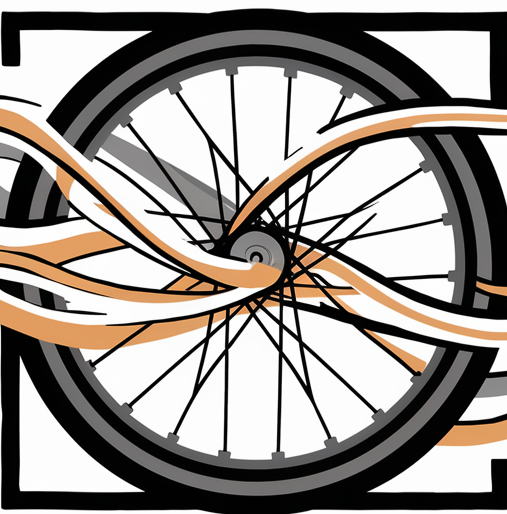Riding a bicycle on the sidewalk is a common question among cyclists. The answer isn’t straightforward, as it largely depends on local laws and regulations. In many places, riding on the sidewalk is allowed, but in some areas, it is prohibited.
Before you hop on your bike, it’s essential to check your city’s rules, as this ensures the safety of both cyclists and pedestrians. Understanding these guidelines can make your ride more enjoyable and stress-free. So, can you ride a bicycle on the sidewalk? Let’s explore the nuances of sidewalk cycling together.
Can You Ride a Bicycle on the Sidewalk?
Bicycling is a fun and healthy way to travel, but many riders wonder about the best places to ride. One of the biggest questions is: Can you ride a bicycle on the sidewalk? The answer isn’t as simple as yes or no—it varies depending on the location. In this article, we will explore the rules around riding bicycles on sidewalks, the safety concerns, and considerations for both cyclists and pedestrians. So, grab your helmet and let’s pedal through the details!
The Basics of Sidewalk Cycling
Before diving into specific laws, it’s essential to understand what sidewalk cycling means. Sidewalk cycling refers to riding a bicycle on the walkway intended for pedestrians, as opposed to the road. Sidewalks are typically found beside the street, providing a space for people to walk safely away from vehicular traffic.
Legal Regulations by State
Different states across the country have their own laws regarding riding a bicycle on the sidewalk. Here’s a summary of some regulations:
- California: Generally allows cycling on sidewalks unless posted otherwise, especially in business districts.
- New York: Bicycles are allowed on sidewalks outside of Manhattan but must yield to pedestrians.
- Texas: Sidewalk riding is permitted except in areas where local laws prohibit it.
- Florida: Cyclists can ride on sidewalks but must adhere to local ordinances that may restrict it.
It’s vital to check local laws as they can vary from city to city. Riding on the sidewalk might be allowed in one area but banned in another, especially in commercial zones.
Common Reasons to Ride on the Sidewalk
There are a few reasons why some cyclists prefer to ride on sidewalks rather than streets:
- Safety from Traffic: Sidewalks can feel safer, especially for children or inexperienced riders.
- Convenience: Sidewalks may provide a quicker route to certain destinations.
- Lack of Bike Lanes: In some areas, the absence of bike lanes forces cyclists to seek alternate paths.
However, while riding on the sidewalk can seem more secure, it’s important to consider potential risks.
Risks of Sidewalk Cycling
Though it might be tempting to stay on the sidewalk, there are some dangers to be aware of:
Conflicts with Pedestrians
One significant concern is the interaction between cyclists and pedestrians. Sidewalks are primarily intended for foot traffic, and riding a bicycle can pose risks:
– **Accidental Collisions:** Cyclists can collide with pedestrians, leading to injuries.
– **Obstructed Paths:** Busy sidewalks can become congested, making it challenging for cyclists to navigate safely.
Visibility Issues
Riding on the sidewalk may give cyclists a false sense of security. In many situations, drivers may not see them when they come off the sidewalk to cross streets:
– **Entering the Road:** Bicyclists may not be visible to drivers looking for cars instead of bikes.
– **Cutting Corners:** Drivers turning onto roads may not anticipate cyclists coming off the sidewalk.
Best Practices for Riding on Sidewalks
If you’re in an area where sidewalk riding is allowed, following some best practices can help ensure safety for everyone:
- Yield to Pedestrians: Always give the right of way to pedestrians walking on the sidewalk.
- Use a Bell: Announce your presence by using a bell or calling out politely when approaching pedestrians.
- Ride Slowly: Maintain a safe speed to allow for quick stopping, especially in crowded areas.
- Stay Alert: Watch out for obstacles, such as trees, poles, and other sidewalk users.
Alternatives to Sidewalk Riding
While sidewalks may seem like a safe refuge, there are better alternatives for cyclists. Here are some options:
Dedicated Bike Lanes
Most cities are increasingly incorporating dedicated bike lanes into their infrastructure. These lanes provide a safer environment for cyclists while keeping them separated from both vehicles and pedestrians.
Shared Use Paths
These paths are designed for both pedestrians and cyclists. Be sure to follow the path rules, and yield to pedestrians just like on sidewalks.
Understanding Local Ordinances
It’s crucial for cyclists to know their local city ordinances. Many cities have specific regulations about where you can ride. For example, in many urban areas, cyclists might be required to ride on the street if a bike lane is available, while sidewalk riding is prohibited. Always check and follow the local laws to avoid fines and ensure everyone’s safety.
Sidewalk Riding in Specific Situations
Certain situations can influence whether riding on the sidewalk is appropriate. Here are a few factors to consider:
Children Riding
For young riders, sidewalks can be a safer alternative. However, parents should supervise children and teach them about sharing space with pedestrians.
Busy Urban Areas
In crowded city locations, riding on the sidewalk might seem safer. However, it’s important to look out for pedestrians and follow local laws.
Aging Riders
Older adults or those with mobility issues may prefer to ride on sidewalks for added safety. Consider taking extra precautions in these cases to avoid conflicts.
In summary, the question of whether you can ride a bicycle on the sidewalk is complex and depends on local laws and specific circumstances. While riding on the sidewalk can provide a sense of safety, it also comes with risks, especially concerning pedestrian safety. Understanding the rules, considering the environment, and being respectful of others can ensure that all road users can share their space safely and comfortably. Remember, whether you choose to ride on sidewalks, bike lanes, or roads, the ultimate goal is to enjoy your ride and remain safe!
VERIFY: Can you ride bicycles on the sidewalks?
Frequently Asked Questions
“`html
What are the general rules for riding bicycles in urban areas?
In urban areas, cyclists should follow local traffic laws which often include riding in the same direction as traffic, obeying traffic signals, and using designated bike lanes when available. Some cities prohibit riding on sidewalks, especially in congested areas, to ensure pedestrian safety. Always check your local laws to understand specific regulations regarding cycling.
Are there specific locations where riding on the sidewalk is permitted?
Yes, many places designate certain areas where riding on the sidewalk is allowed, particularly in low-traffic zones or areas with heavy pedestrian traffic. However, even in these locations, cyclists should yield to pedestrians and ride at a safe speed. It’s essential to familiarize yourself with the local rules to avoid violations.
What should I do if I encounter pedestrians while riding on the sidewalk?
If you find yourself on the sidewalk with pedestrians, slow down and be courteous. Always give way to pedestrians by moving to the side and alerting them with a bell or verbal acknowledgment if necessary. Prioritizing pedestrian safety helps maintain harmony between cyclists and walkers.
Does riding a bicycle on the sidewalk impact insurance or liability?
Riding on the sidewalk can influence liability in case of an accident. If a cyclist disregards local laws and has an accident while riding on the sidewalk, they might assume greater responsibility. Always consult with your insurance provider to understand how your coverage applies based on whether you ride on the road or the sidewalk.
How can I find out if my city allows sidewalk cycling?
To find out if your city permits sidewalk cycling, check your local transportation department’s website or consult city ordinances. Many cities provide easy access to cycling rules and regulations online. Additionally, local bike advocacy groups can be a valuable resource for understanding your area’s cycling laws.
“`
Final Thoughts
Riding a bicycle on the sidewalk depends largely on local laws and regulations. In many places, it’s prohibited to ensure pedestrian safety, while some areas allow it under certain conditions. Always check your local traffic laws to avoid fines and ensure a safe riding experience.
When you consider personal safety, riding on the sidewalk can pose risks, especially in crowded areas. It’s crucial to be aware of your surroundings and yield to pedestrians. Ultimately, the question of “can you ride a bicycle on the sidewalk” requires understanding both the rules of your area and the safety of those around you.


